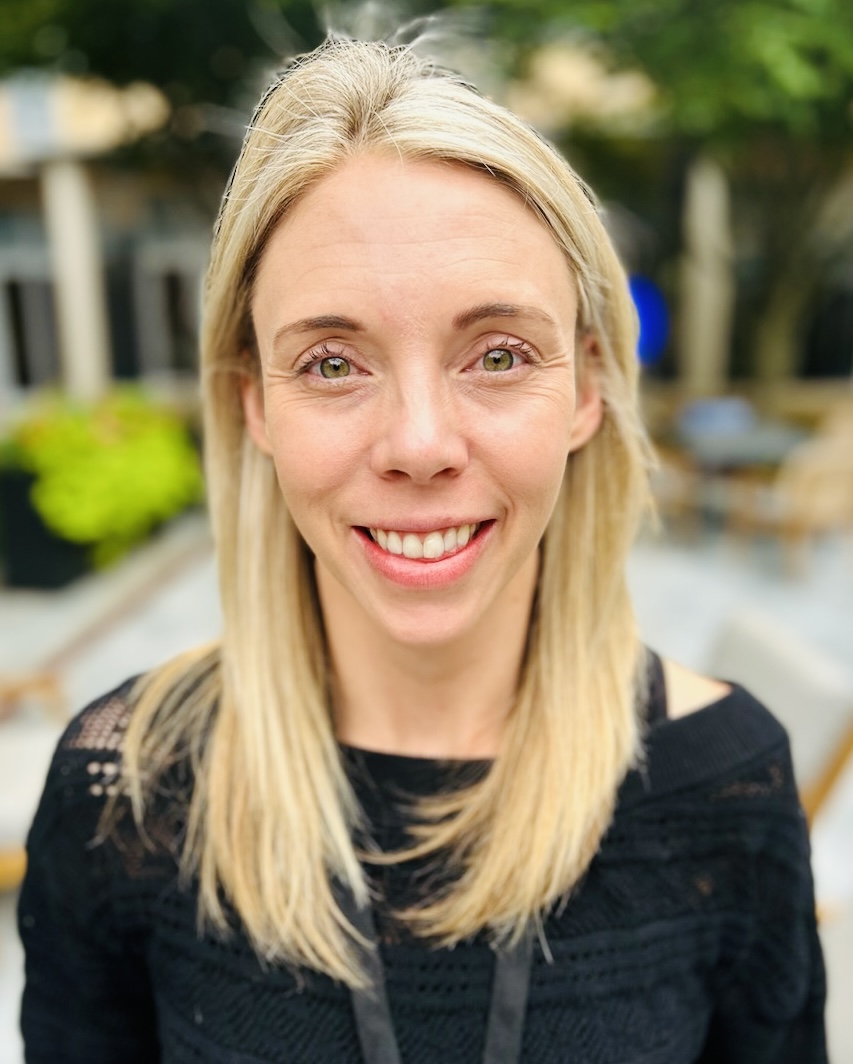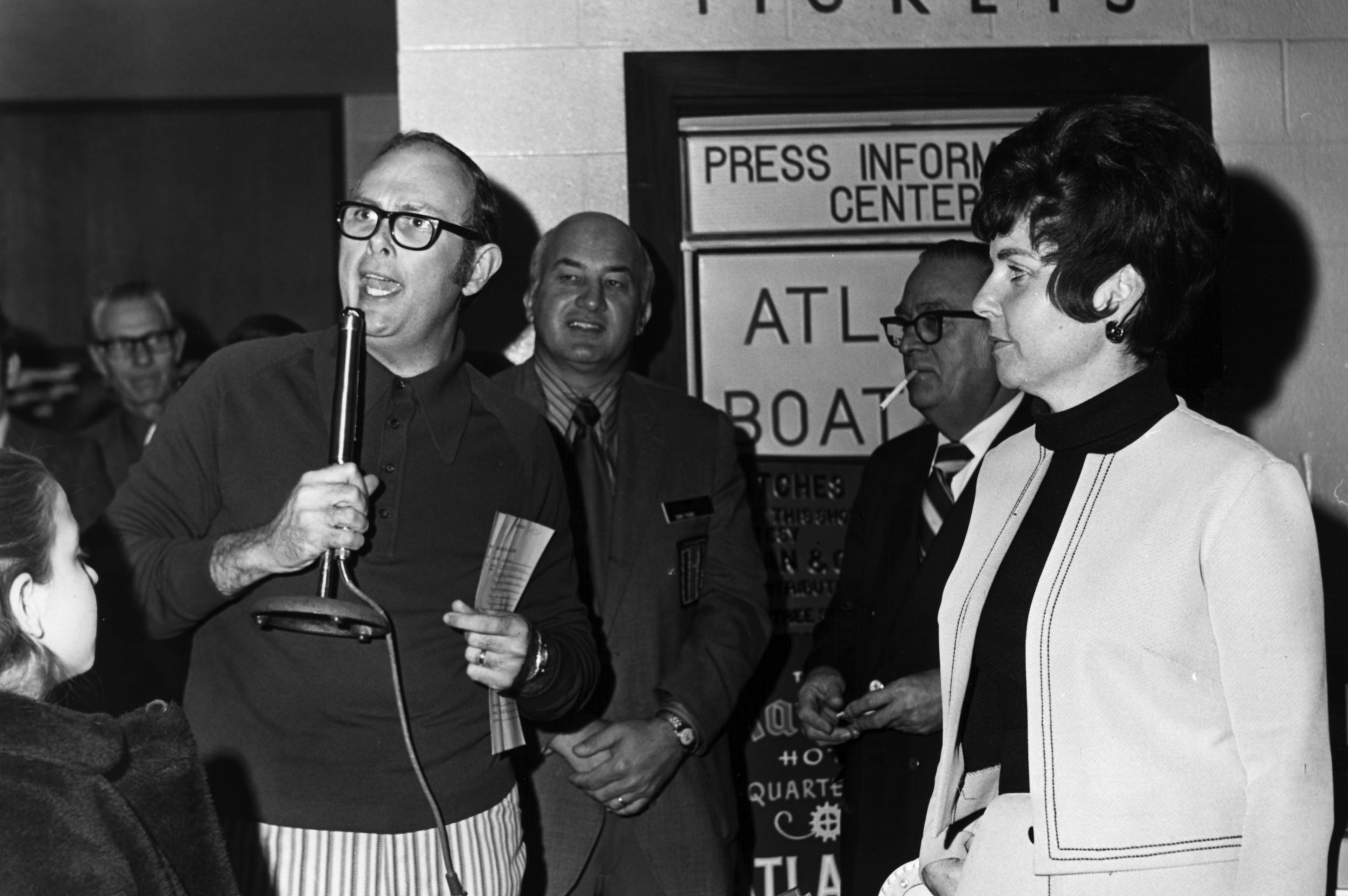Meet the Atlanta painter who was selected by Dior to design art handbags
On the far west end of the Goat Farm Arts Center — a former cotton gin machinery company turned 11-acre cultural hub now home to many of Atlanta’s contemporary artists — stands an old factory.
At one end of the brick building, visitors can find a painted door beneath a rusted metal awning leading to the new art studio of Atlanta-based, Haitian American artist Patrick Eugène. Late last month, Eugène welcomed a small crowd of visitors to tour his space, which is not generally open to the public.
A reclaimed-wood staircase rose from the first-floor gallery to a lofted paint studio, where natural light poured through clerestory windows framed in the same rustic wood overlooking green trees. The setting felt fitting for Eugène’s figurative paintings, with their warm earth tones and abstract expressionist compositions. Outside, the Goat Farm’s rusted machinery and weathered walls echoed the themes present in much of Eugène’s work: heritage, identity, migration and belonging.
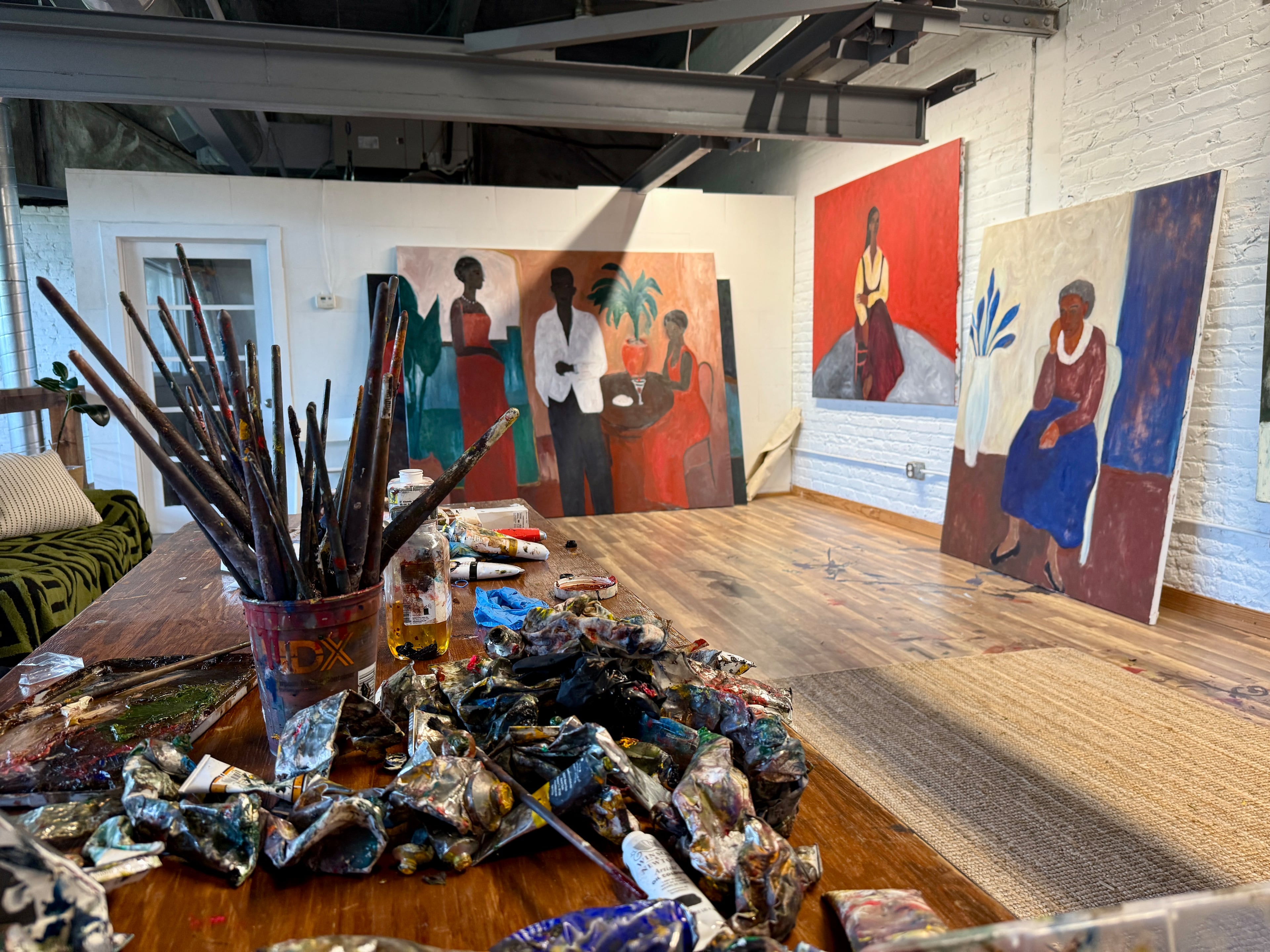
On a wall in the loft hung one of Eugène’s latest large-scale paintings in progress. A ladder rested to one side of it; a table covered in squeezed tubes of oil paint and well-loved brushes sat before it. The half-completed painting is one of several Eugène has been working on recently as part of a new, currently unnamed, series.
The painting shows a handful of individuals of African descent with so-far undefined relationships. It’s created, Eugène said, on raw canvas requiring laborious effort to saturate its pores and bring color to the surface.
“It’s not prepped. It’s not primed. The paint soaks into the canvas,” Eugène said. “ … You’ve got to keep working on it … I’m sweating, I’m scrubbing the paint in … Most of it is done with a brush, but some of it scrubbed with a rag … It gives me that feeling that I had when I was making abstract works.”
Before becoming a figurative painter, Eugène spent 10 years creating abstract and experimental artworks that allowed for full-bodied spontaneity and improvisation.
Like jazz (another love of his), Eugène paints as the spirit moves him. He meditates and prays before approaching a canvas, having faith that God or his ancestors will guide his strokes. On a coffee table in the studio is a book called “Flash of the Spirit,” which dives into African spiritual practices.
“When I am done, I say ‘Thank you. I’m not sure exactly who you are, but I know we’re connected and I appreciate you showing up.’ … It’s a really intimate experience for me,” he said.
To the right of the half-finished canvas was another new painting of a couple, their bodies blurring where they merge in embrace cozy in their home.
Across from it is a third painting in the new series: a pregnant woman in a red dress (a nod to Eugène’s wife who spent most of the last several years pregnant with three children born back-to-back) is pictured near a suave man dressed in a tuxedo standing near another woman seated at a cocktail table.
“You’re standing among three pieces that are in progress right now,” Eugène said to his visitors. “I’m kind of pulling away from solitude and more into family and gathering … what does the Black home feel like?”
The new paintings of domestic or social gatherings are a departure from Eugène’s previous series, “Solitude,” which featured only solitary figures and wrestled with the fine line between introspection and isolation. That series was Eugène’s way of finding understanding for two of his siblings, who are far more introverted than he is.
Before “Solitude,” Eugène’s series “50 Pounds” (named both for the literal weight limit of a suitcase and symbolically for the weight on the shoulders of members of his family who fled Haiti for the U.S.) explored migration. Both Eugène’s mother and wife were surprised by the difficulty of their transition when they immigrated to the United States from Haiti.
“They had thought (the U.S.) was going to be this Disney World of a place — a place of opportunities. They quickly realized that everything about Haiti is what they wanted and what they loved,” said Eugène. In parts of Haiti, a village helped raise children who could roam freely.
“There were literal bars on the windows when they moved to eastern New York. Brooklyn wasn’t the safest neighborhood,” Eugène said. “My mother speaks to that story; being bullied and teased for the way she dressed and the language she spoke … My wife has the same exact story.”
Visitors to Eugène’s studio listened intently to his stories as he described his work’s trajectory from contemplating his ancestry, to solitude, to modern familial life. The progression, he said, has felt natural.
His whole journey, in fact, “has felt blessed,” he said — ever since he first taught himself how to paint at the age of 27. Eugène has no formal art training. He first picked up painting as a hobby for relieving the stress of a 9-to-5 job. Surrounded by abstract expressionism in New York, he spent years experimenting with assemblage, found objects, burning, painting and drawing until eventually he developed the figurative style he has today.
His path has indeed been marked by moments of kismet. He did his first solo show in Ghana where he was discovered by Mariane Ibrahim, a Somali-French art dealer and curator who later offered him a show at her Paris and Mexico galleries.
It was in Ibrahim’s Paris gallery that Eugène’s paintings were discovered by an art collector working for the haute couture luxury French fashion company Dior. That connection led to Eugène’s latest achievement: being selected as one of 10 international artists, and one of only two Americans, to participate in the 10th annual Dior Lady Art project.
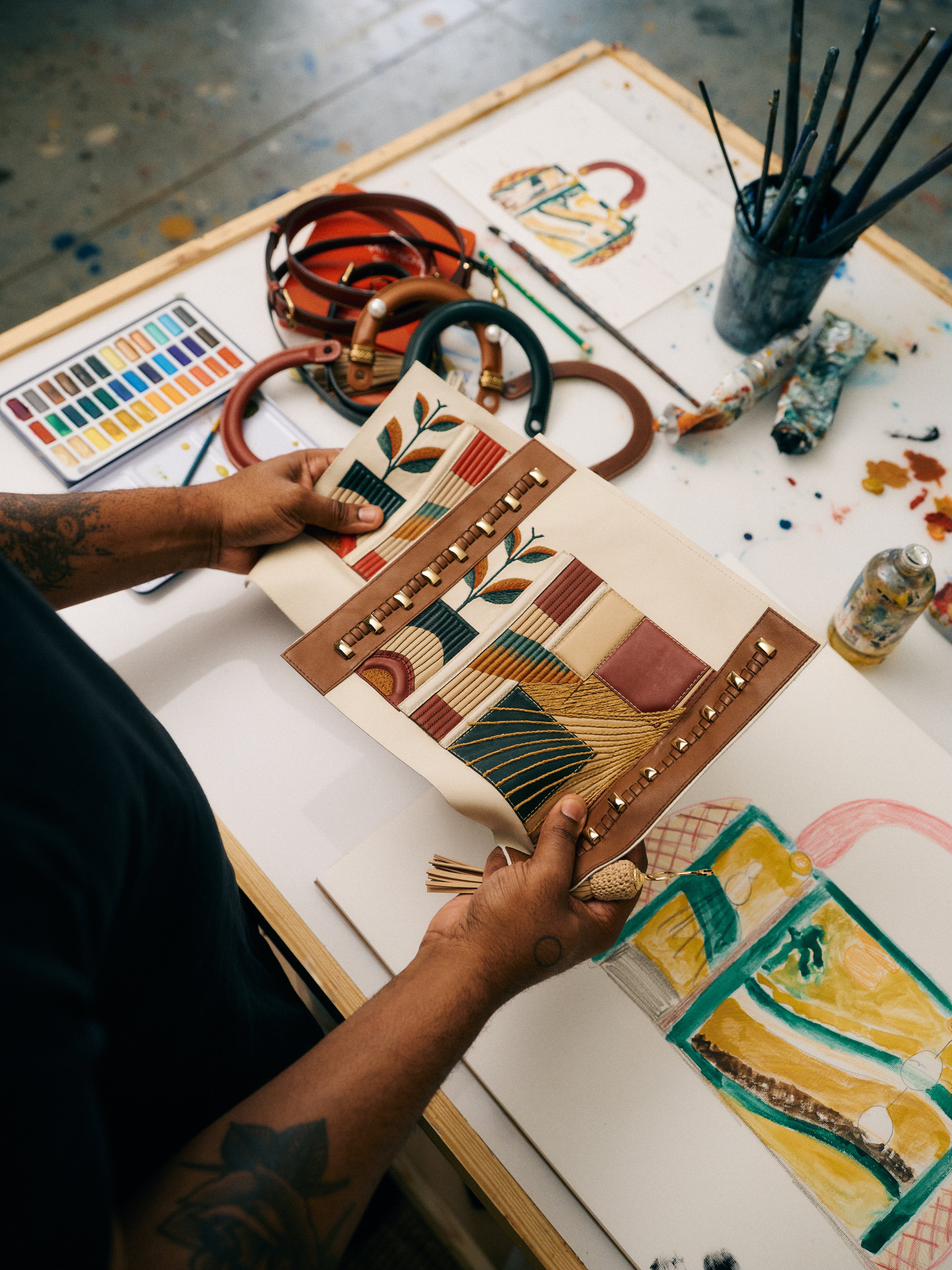
The project gives select artists an opportunity to reinterpret the Lady Dior luxury handbag as a work of contemporary art. Eugène sent Dior three conceptual sketches for the bag’s three available sizes. Dior representatives flew to Atlanta with fabric samples to strategize how to materialize his vision.
He proudly showed visitors those conceptual drawings, holding them side-by-side with photographs of the now finished Dior bags in France.
His ideas for the bags, he explained, were inspired by Haiti’s French nickname La Perle des Antilles (The Pearl of the Antilles). The 18th-century phrase refers to a time when Haiti was a French colony rich with resources such as sugar, coffee and indigo. The island produced great wealth for France. Those riches, however, were built by exploiting enslaved Africans.
“The people of Haiti never benefited from such a beautiful term,” he said. “ … I wanted to reclaim that term in my own way and for the people of Haiti.”
Each bag thus has a pearl hanging from it and is made from materials that pay homage to Haiti, such as raffia, used frequently in Haitian weaving.
The first of the three bags, Eugène said, was inspired by Haiti’s rolling landscapes — hills like the ones his grandmother once enjoyed while eating mangoes and looking out over the land from her home near Port-au-Prince. On a housekeeper’s salary, she learned to invest and save and built her home with dreams of hosting her all her children and grandkids. She was forced to flee when the area grew too dangerous.
The second handbag evokes the essence of the Haitian Caribbean. It features hues of blue and is made with some see-through nets on its ends to honor Jacmel, an artist community and fishing village on the southern coast of Haiti.
The last design, Eugène calls the royalty bag. It is the most ornate of the three with gold details and an elegant flower. Eugène almost always incorporates a flower into his artwork to honor his mother, whom he gardened with as a child.
All three bags will be presented at Dior activations around the globe, including in the United States at Art Basel Miami, in Los Angeles and New York. Eugène will help celebrate his son’s 20th birthday by taking him to Art Basel Paris where Dior will also showcase the bags.
Eugène will be gifted one of each of his bag designs, then face the predicament of deciding which to give to his wife, and which to his mother.
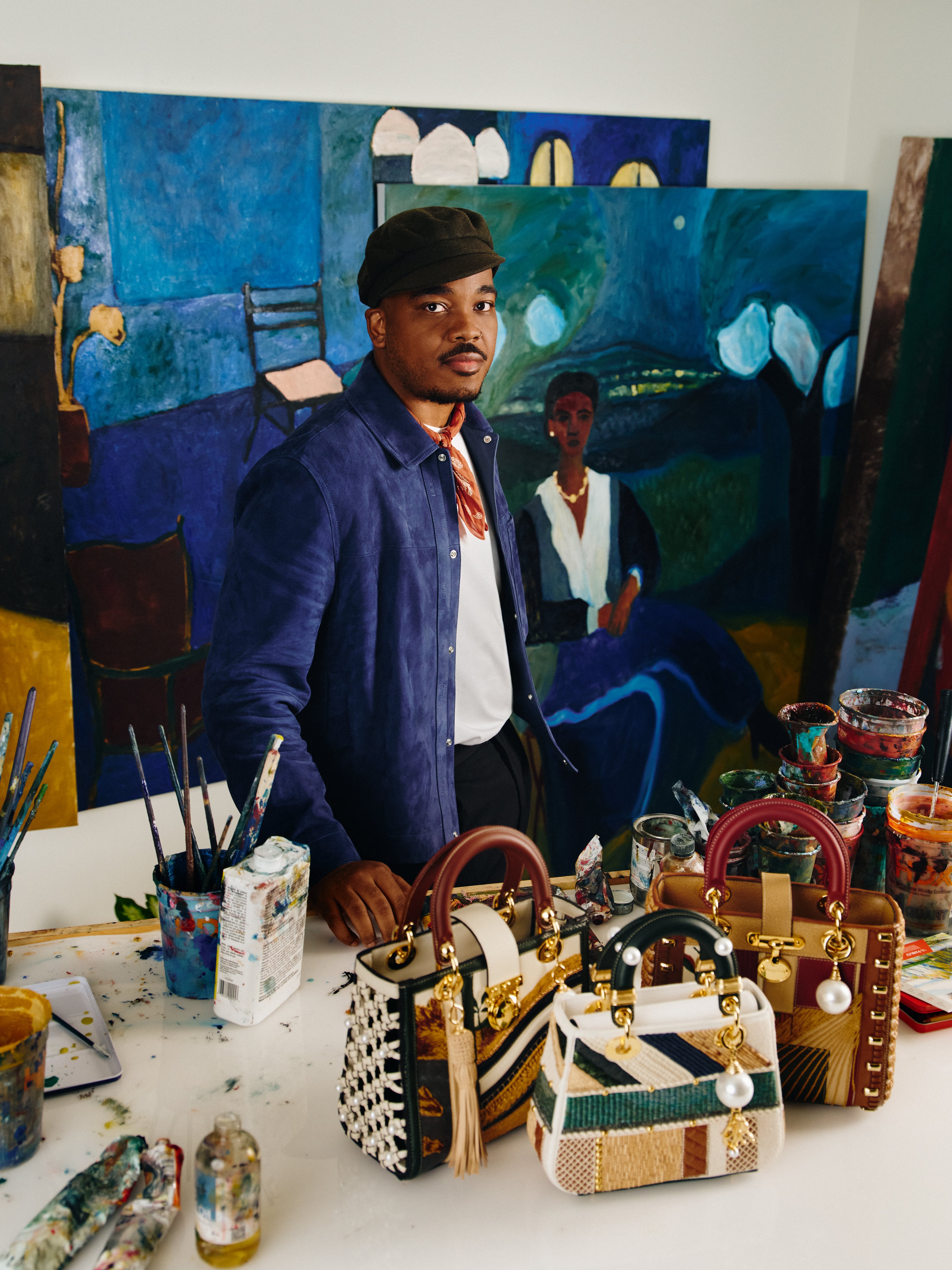
Designing something three-dimensional again, Eugène said, felt invigorating.
“I spent so many years in experimentation that I feel like I’m always craving and have this urge to create objects again,” he said. “I always want to explore … I never knew I could paint until I was 27 years old. So who knows what else? … I wake up every day and I say, ‘Who knows? What else is there?’”
